Thinking About Art and Aesthetic Value

Interview by Richard Marshall
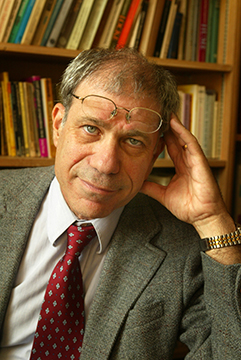
'A property of an artwork is artistically valuable if knowing or recognizing that the work has the valuable property requires grasping the work’s meaning (usually by interpretation).'
'A lot of the literature on this topic focuses on what work’s ask us to imagine about ourselves vis a vis a morally flawed character. Are we rooting for her (him)? Are we hoping she escapes detection? Even if this occurs, it does not automatically follow that the work is morally flawed.'
'One of the chief arguments behind abandoning the attempt to define art is that n (take your pick about a number to replace n) years of debate has not led to consensus or has led to a standoff. I think that is a terrible argument. Since when do we get consensus on any big issue in philosophy?'
'I don’t endorse constant political activism in the courtroom. That can happen on the right or left, and it will inevitably create a backlash. I do think judicial interpreters have to take into account the social and political consequences of their decisions and sometimes considerations of justice that go beyond the usual desiderata of legal interpretation.'

Robert Stecker is interested in the interaction of ethical and aesthetic value amongst other things. Here he discusses the difference between art and aesthetics, the pluralism of art, artistic value and universalism, value entanglement, artworks, ethical and artistic values, cognitive values and art, aesthetics outside art, aesthetics and the good life and why we can still philosophise about art, interpretation in art and law.
3:16: What made you become a philosopher?
Robert Stecker: It happened in high school. In my junior year, I started reading Sartre, Camus, Nietzsche, but also Plato, and lots of literary works with philosophical implications. Because I grew up in NYC, I could see plays by Beckett, Pinter, Ionesco, Genet and other avant garde playwrights whose themes were on the same wavelength as my readings. I think the questions I most thought about then concerned the nature of freedom. In my senior year, I seriously thought about what kind of life I wanted to live and what career would fit it and decided an academic one would pretty much be the only one that would work for me. (Don’t ask me what kind of conception I had of that life or where it came from.) My two biggest interests were literature and philosophy, and because the former, it seemed to me, was much more accessible than the latter, I could do the most good by pursuing philosophy. I pretty much stuck to that decision, albeit with a few dark nights of the soul.
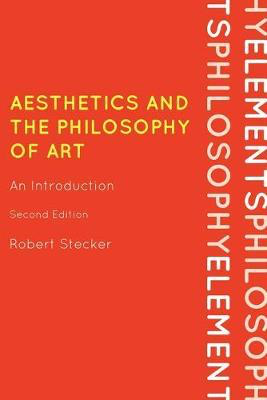
3:16: You’re interested in the philosophy of art and aesthetics – so perhaps we should begin with that distinction. Can you say what’s the difference and whether this is a viable distinction and if it is, what makes it so valuable?
RS: It is a really important distinction both for aesthetics and philosophy of art (adjusting for the fact that ‘aesthetics’ can mean a lot of different things.) Aesthetics is the study of a specific kind of value, that is found in abundance in lot’s of artworks, but in fact also in just about every aspect of human life: in our interactions with nature and humanly made environments, in science and mathematics, in the kind of artifacts we make and possess, in activities like making and sharing meals, playing games, shopping, dating and so on. If you don’t distinguish aesthetics from philosophy of art, you miss how aesthetic experience and value pervade every aspect of human life. On the other hand, philosophy of art is so much more than exploring art’s aesthetic value. It touches on every field of philosophy. If you are interested in defining art – answering the question - What is Art – you will end up thinking about concepts, what philosophical definitions are supposed to accomplish, and alternative ways of answering the question without giving a definition. If you are interested in interpretation, then you will be entangled in epistemology and philosophy of language. If you want to know what expression of emotion in art is, or the type of emotions art elicits from us, then your exploring issues in philosophy of mind.
But there is something else here. There is a way of answering all the central questions of philosophy of art by appeal to the aesthetic, and that was the approach that dominated for a long time in the 20th century – into the 70s. I found it stultifying and that it reduced art to something so much less than what it actually offers. So I that is another reason why the distinction is important.
3:16: So how should we understand what you consider the highly pluralistic value of aesthetic value and why consider it to be universal?
RS: Actually, it is not aesthetic value that is pluralistic but artistic value. Aesthetic value is always the same wherever it occurs. Aesthetic experiences are highly variable with respect to their phenomenology, and the properties of objects of those experience that are responsible for the experience’s aesthetic value. But any experience will have aesthetic value as long as it is focused on a specified range of properties belonging to at least one object, and it is valued for its own sake.Aesthetic value is universal two ways. Everyone who is not pressed by hardship or an obsession seeks it out, it is something that everyone wants and needs, and it is capable of being found in almost every compartment of human life.
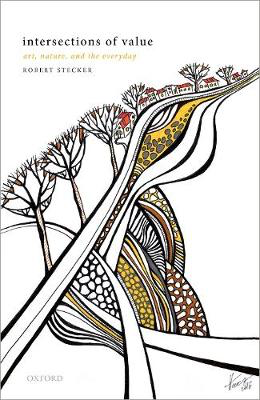
3:16: Ok, so what should we understand by artistic value and again, why consider it to be universal? You have a test for artistic value don’t you – what is it and why is it useful?
RS: So there’s a multipart question. Let’s take each part in turn.
Importing the question about pluralism from before, artistic value is pluralistic, because it is a composite, second-order value. All that means is that it is composed of other values without being identical to any of them: aesthetic value, ethical value, cognitive value, art-historical value among others. A work does not have to have all these values at once to be artistically valuable. It is more like it has to have one or the other or the other…, though there are additional complexities.
In what sense is artistic value universal? Artworks are found in virtually all cultures, and I think the explanation is the value of art. Furthermore, the occurrence of these arts extends far back in human history. It is known that painting and sculpture go back to Paleolithic times, at least 40,000 years ago, but there is evidence that it goes back even further. These arts are everywhere that humans are, and this has been so for a very long time.
And then you asked about a test for when a work has artistic value. The basic idea goes like this: take any value an artwork possesses. It could be its monetary or its instrumental value in hiding a hole in the wall, or the ethical insights it makes available. Which of these are artistic values, which not? Test: Does one need to understand the work to recognize its being valuable in that way? If so, the value in question is an artistic. If not, it is not. A slightly more formal way of putting the matter is:
A property of an artwork is artistically valuable if knowing or recognizing that the work has the valuable property requires grasping the work’s meaning (usually by interpretation).
So the monetary value and the hole-hiding value are not artistic values, the ethical insight is. This is useful because if you say artistic value is a big composite value, to make this non-trivial you need to show how you exclude valuable properties works possess that don’t contribute to their value as art. You don’t want artistic value just to be equivalent to value an artwork happens to have.
3:16: Artworks have all sorts of values in them alongside the aesthetic and the artistic. Is this what you call ‘value entanglement’? How does your test for artistic value avoid value entanglement?
RS: Take all the values or valuable properties artworks have such as those just mentioned. The test is meant to tell you which ones are artistically valuable and which ones are not. In general, it’s fine for non-artistic values to coexist alongside artistic ones in the same artwork. That’s life, and it makes life more interesting. But sometimes, when trying to identify one value something has, it’s hard or impossible to avoid mentioning another. That is when two values are entangled. So take the sentimental value a song has for a couple. It’s valuable to them because they chose it for their first dance together at their wedding. When they hear the song again later they think back fondly on their wedding day. But the sentimental value might be enhanced because the song expresses just the right emotion (or sentiment) that captures their feelings on that occasion. Call that expressive value. Anyone who understands the song can appreciate the expressive value, even if the song has no sentimental value for them. So the sentimental and the expressive are two different value, but for the couple, its hard or impossible to describe the sentimental value without mentioning the expressive one. So the two values are entangled.
It’s kind of like entanglement in physics where, for a pair of particles, their quantum states cannot be described independently. Except that I think quantum entanglement is symmetrical, but value entanglement can be one way.
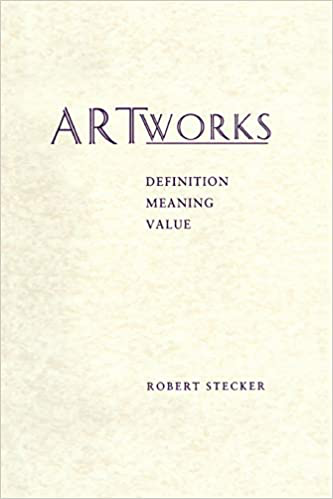
3:16: So do all valuable artworks possess aesthetic value?
RS: No! That is what the avant garde has taught us. Since Duchamp’s readymades, there have been so many artworks where aesthetic value is not the point. These works may be striking in some way, but it is all in the service of making a point, often about art (Fountain, Erased de Kooning) an art form (Levine’s photographs of photographs), society and politics (some Barbara Kruger).
Art on any of these subjects can have lots of aesthetic value, but the point of the works just mentioned and many others, is not to dwell on their aesthetic properties, but to call attention to their point. That is not a criticism. Some of them are brilliant.
3:16: Many have ethical value. So how do you understand the relationship between aesthetic value and ethical in such a piece, in particular when interaction between aesthetical and ethical values inverts the usual thinking about them? I guess this links with the questions about whether a moral defect can be an artistic virtue and make a positive contribution to artistic value and if it can whether actually ethical values can be systematically related to artistic or aesthetical ones?
RS: There are lots of ways ethical value bears on artistic value. Sometimes, the way a work is made is ethically fraught and sometimes we can’t ignore the consequences in the real world of some works. But most discussions in the philosophical literature are about what’s called the ethical value intrinsic to a work in virtue of the moral value of the attitudes it projects, the sensitivity and insight with which it explores some moral terrain, or, for some, what it asks us to imagine about ourselves. You want to know what I think of purported cases where a work has moral flaws or is just plain immoral, but that makes a positive impact on artistic value. I think all these cases are complicated and that it is hard to finds a clear example of inversion. And no, there are nothing like systematic implications about ethical and artistic value. A lot of the literature on this topic focuses on what work’s ask us to imagine about ourselves vis a vis a morally flawed character. Are we rooting for her (him)? Are we hoping she escapes detection? Even if this occurs, it does not automatically follow that the work is morally flawed. This is partly because these imaginings, even if prescribed by the work, are often restricted to the fictional world before us, and have no implications about real world attitudes. (A great article on this topic is Adriana Clavel-Vaquez’s ‘The diversity of Intrinsic Flaws in Fiction.’)
Also even if they are prescribed, the work itself may use this prescription to help it make a point that is completely morally kosher – such as how easy it is to lose our moral bearings in the face of charismatic characters. Finally, I doubt that the imaginative attitudes towards these morally questionable characters really are prescribed, but that the works leave how we respond much more open, and the actual responses in audiences are much more various. Well this is just one type of case where some have thought inversion occurs. There are others. (Another great article that explores some of these Eileen John’s ‘Artistic Value and Opportunistic Moralism.’) But I usually have similar reactions to all these cases.
3:16: There are cognitive values as well that aesthetic value interacts with. How does this work – and does it matter what artwork is being considered or can we generalize from particular cases to all?
RS: There is one very simple way this works, no doubt among other less simple ways. Certain kinds of cognitive value are part of the composite that constitutes artistic value. If a work has one of these kinds of cognitive value, it makes a positive contribution to its artistic value. Understanding that is the easy part. The hard part is saying what kinds of cognitive value these are and how it comes about that artworks have them. Clearly I can only scratch the surface here.
One kind of cognitive value that artworks tend to possess in abundance to what might be called conceptual enrichment. Artworks, especially representational ones, and among those, especially narrative ones, gives us ways of conceiving – conceptions – of many familiar and unfamiliar aspects of human life and the world – values, human actions, historical events, even things as mundane as the seasons, stone walls, or apple orchards. (By conceptions, I don’t mean general concepts but a particular way of fleshing out a concept.) These conceptions might be new, or they might be ones we already possess, clarified or by means of vivid imagining, better appreciated. I am hardly the first to point out the function of artworks to provide this type of cognitive value. Among the many books and articles that do this a possibly forgotten book by Peter Jones from 1975 - Philosophy and the Novel: Philosophical Aspects of Middlemarch, Anna Karenina, the Brothers Karamazov, a La Recherche Du Temps Perdu, and of the Methods of Criticism is remarkable for doing this in such great detail in the works mentioned in the title.
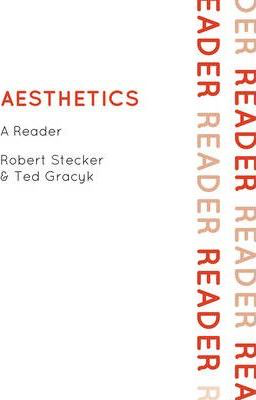
3:16: You’re also interested in looking at aesthetic value in non-art things – such as functional artifacts and nature. So are there aesthetic norms for appreciating nature, and are there other norms that constrain them, maybe epistemic or ethical for example?
RS: I can’t think of any aesthetic norms. I am not sure whether the aesthetic is the realm of norms, or just values. I do think there are epistemic norms. One has to have a fairly accurate knowledge of the object of appreciation. If one thinks one is appreciating a bird, it better be a bird. And it better have the properties you think you are appreciating it for. You don’t need a great deal of scientific knowledge to properly aesthetically appreciate it, or even appreciate it best, but a curiosity about the natural environment, an operative desire to learn more about it, is an aesthetic virtue. But so is an openness to seeing it ways one does not expect. Are there moral norms? Is there ethical – aesthetic interaction? Does what is (considered) harmful to environment make it aesthetically worse? I haven’t come to a definite conclusion about that.
3:16: And what about functional artifacts? How does aesthetic appreciation work with these – what makes them aesthetical and again, are there constraints that arise with these things that we don’t have when appreciating art objects?
RS: Functional artifacts are part of the artificial environment we live in. If we are among the fortunate people in this world, who can have the means to pick and choose these things, we care about how they look, how they feel to the touch, and whether these sensory properties enhance our experience of using them or their ability to fulfil their function. This is pretty obvious with clothes, cars, the crockery and cutlery we use for meals, especially but not only for special meals that are important family or social occasions. But it also true of items that tend to offer a much more limited variety of choices regarding their appearance: cell phones and computers, small and large appliances. The differences here among products are much smaller than in the case of all the clothes that are out there, but small differences can be important to us. Think how much Steve Jobs cared about the materials that went unto producing an Apple phone. He was not just thinking about quality materials, but how they would look and feel in the hand. The aesthetic properties of these artifacts involves the interaction of function, materials, and sensory properties, and our experience of them reflects that.
3:16: Do you think that aesthetic appreciation is necessary for a good life, or can we be ok without it? And why, going to the other extreme, do you think that a life wholly consumed by aesthetic reception would be monstrous? Isn’t there something admirable in a person who dedicates their whole life to the arts?
RS: I do think that. I believe we have a psychological, possibly biological, need for aesthetic stimulation. My evidence is desiderata that I discussed earlier regarding the universality of the aesthetic. A presupposition of that claim is that aesthetic experience comes in all kinds of degrees ranging from very simple to very complex: from choosing among consumer goods – from hairclips, to clothing, to small appliances on the basis of looks -colors, designs, visible properties of their materials to the appreciation of historically situated artworks. They occur at sporting events and concert halls, at screenings of action films and art films, in offices softened with plants and in cloud forests. Not everyone agrees that all those things have aesthetic value.
Even if I am right about the range of aesthetic experience, I admit that my belief needs empirical confirmation and psychologists are only beginning to work on that. Studies of subjective well-being have mostly ignored the aesthetic.
Let’s suppose I am right about our need for aesthetic value in our lives. Aesthetic value is just one value among others. Among these is moral value which derives from the fact that there is no decent life for one person without other people and the social and political arrangements that make It possible to live together. This includes an aesthetic life. This creates a responsibility to do one’s part to help preserve these arrangement, sometimes to alter them, and to care for those one lives among including those who are least well off as Rawls put it. To ignore that to focus on aesthetic satisfaction is monstrous, just as much as gluttony or excessive greed are.
3:16: Given that the term ‘art’ is a placeholder for so many different things, does it still make sense to philosophize about it, and wouldn’t it be preferable to philosophize about each different thing in turn and not worry about a general viewpoint?
RS: That expresses an important trend in recent philosophizing in this area. But it is not my view. There are several reasons I don’t buy that approach. First, there are ways of defining art – specifying a conception of art as a whole – that gives individual art forms their due without being completely deflationary. My own approach to defining art (which I admit to undertaking with a somewhat quixotic spirit) takes this approach. Second, in trying to make sense of some of the puzzling production found in art world of the 20th and 21st century, it is sometimes better to try to figure out why it is art, or why it has something recognizable as artistic value, before attempting to decide what art form it belongs to. Finally, one of the chief arguments behind abandoning the attempt to define art is that n (take your pick about a number to replace n) years of debate has not led to consensus or has led to a standoff. I think that is a terrible argument. Since when do we get consensus on any big issue in philosophy? Plus, even if there is great disagreement, one view might be right just as one candidate in a political contest might be the best even if no everyone sees that.
3:16: Art needs interpretation. But you’ve pointed out a problem for someone of your ilk. I think you call yourself a liberal humanist, and so you dislike talk of the death of the author and like the intentions of the artist, but when it comes to law you see original intentions behind the law as a negative smokescreen for maintaining the status quo – what we need is constant judicial activism, you say! So, what sense of interpretation lies at the heart of approaches to art and law that reconciles this problem – or is it a problem the humanist has to live by – or else, for consistency’s sake, should she give up humanism?

RS: I don’t endorse constant political activism in the courtroom. That can happen on the right or left, and it will inevitably create a backlash. I do think judicial interpreters have to take into account the social and political consequences of their decisions and sometimes considerations of justice that go beyond the usual desiderata of legal interpretation.
You have to keep in mind that one of the points I have always emphasized is that interpretation can have different aims, and the sort of interpretations that are best is relative to aim. The aim of legal interpretation, especially when conducted by an appellate court, is to reach a just decision. The decision can have broad or narrow legal implications, but it is determinative. It determines what the law is. It has practical implications that literary or art interpretation never has.I am not against appealing to intention in legal interpretation – the intention of framers of the constitution or of legislators. (Such appeals are more difficult than with works by single artists because in the legal case we are dealing with the intention of groups, often several different groups.)
I am also not against appealing to textual meaning framed in the context of the usage at the time the laws were made. This kind of textualism, by the way, is the dominant form of originalism today, not intentionalism. In fact, hard core textualist have no truck with intentions. It is the originalism of Scalia, which has become so influential in conservative circles. Everyone recognizes a third consideration in legal interpretation which is the consideration of legal precedents that often do not accord with literal textual meanings or intentions.
There are also further factors which are bit more controversial but far from unusual. Laws and the way they have been interpreted and administered often give rise to expectations in society which can affect really important ways society operates. Overturning these can be a big deal. Changes in technology or society can create situations that the original intentions of lawmakers do not address. (Intellectual property in the age of the internet but also what punishments are cruel and unusual.) So what I am against is legal interpretation that says one of these factors always trumps – textual meaning or original intention when it is clear that all these consideration need to be in play. And sometimes, when none are determinative – in what ais called hard cases -considerations of justice, philosophical considerations, need to be brought forward.
The difference with literary interpretation is this. Some interpretive questions may just have no one clear answer even when all the evidence is in. The evidence or appropriate considerations leaves the answer indeterminate. This is true of both literary and legal interpretation. In the literary case, one can just say that several interpretations are equally well supported. If one has a favorite, no one else has to go along. But judges and justices have to issue a decision. They can’t say: ‘we can’t decide; there is no clear answer.’ And their answer will be law. If the evidence or legal considerations leave the best decision open, the law has to be constructed either by favoring some considerations over others or appealing to further extra-legal considerations.
3:16: What’s your favorite art work or aesthetic experience and why – it struck me that we’d all be interested to know what you find valuable when we read about your philosophizing – and was philosophy useful in making you appreciate whatever it is – I guess on top of wanting to know your particular aesthetic interest I want to know what role philosophy of art and aesthetic plays – why should we heed the philosopher here?
RS: Basic answer: I don’t have favorites. There is too much good and great stuff out there to have them. Regarding literature, I have had my obsessions. Dostoyevsky was probably the first, later other Russians especially Tolstoy. Also Nabokov. I had a period where I read all the 20th century Japanese and 19th German (including Austrian and Swiss) novels, novellas and stories I could get my hands on. Kafka in the twentieth century. I could go on. In painting, I had a great love for Vermeer for a while, and Cezanne for another while. Mozart in music. But now, in my 70s, no favorites.
3:16: And finally, for the curious readers here at 3:16, are there five books you can recommend (other than your own) that will take us further into your philosophical world?
RS: 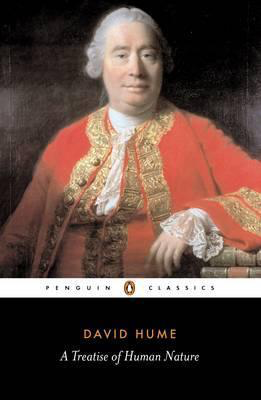
Hume’s Treatise of Human Nature is probably the greatest influence.
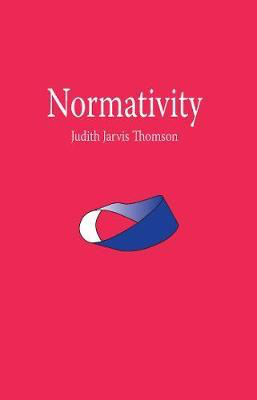
Anything written by Judith Jarvis Thomson (especially Normativity), the smartest philosopher I have personally known, and the person who most influenced my character as a philosopher.
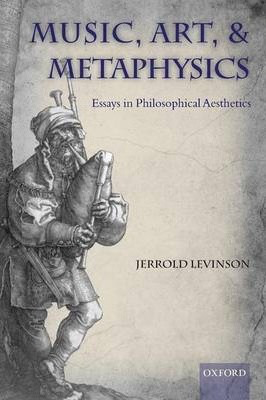
The writings of Jerrold Levinson (especially Music, Art and Metaphysics)
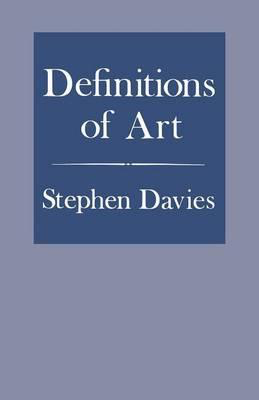
and Stephen Davies (especially Definitions of Art).
Jerry and Stephen are contemporaries who have most influenced and excited me philosophically when I was forming my views.
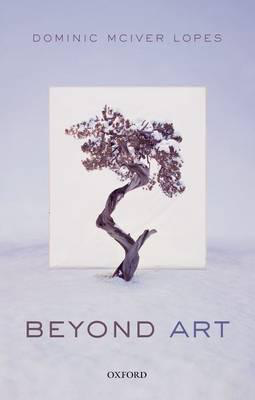
Dom Lopes (especially Beyond Art),
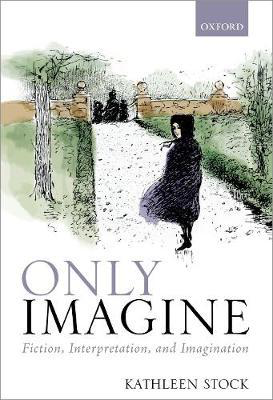
Kathleen Stock (Only Imagine), Stacie Friend and Louise Hansen, (no books from them yet I don’t think), to name those who come first to mind, are producing the work I find very interesting now.

ABOUT THE INTERVIEWER
Richard Marshall is biding his time.
Buy his second book here or his first book here to keep him biding!
End Times Series: the index of interviewees
End Time series: the themes
Huw Price's Flickering Shadows series.
NEW: Steven DeLay's Finding meaning series
NEW Josef Mitterer's The Beyond of Philosophy serialised